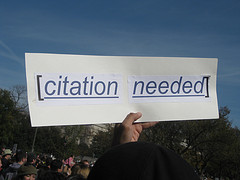Have you been studying Othello in class so long that you’re on a first name basis with the title character?
Do you feel even though you’ve spent so much time studying the play in class you’re still unsure of the play’s major themes?
Do you need to write a paper analyzing a theme, such as jealousy in Othello, and need a bit of inspiration?
If so, you’re in luck, as this blog post provides seven tips for analyzing jealousy in Othello.
Read and Learn to Analyze Jealousy in Othello
First, you’ll actually need to read the play. You should also watch it if possible. (After all, Shakespeare is meant to be seen!)
Next, think of what you’re supposed to be doing: analyzing.
Analysis is a lot like argument; your goal is to convince someone of your opinion. And to convince someone, you’ll need examples to support your ideas.

Think about it this way: Let’s say you just left a job you hated, and your friend tells you he wants to work at the same company. You’ll likely try to convince him not to work there, right? And to do so, you’ll give him plenty of examples, like describing the rude boss, terrible hours, and miserable working conditions. All of these examples support your argument.
So if your task is to analyze jealousy in Othello, you’ll need specific examples from the play to support your ideas. Choose important speeches and conversations that will convince your readers.
7 Tips for Analyzing Jealousy In Othello
Don’t quite know where to begin? Still need some inspiration? Start by reviewing these seven ideas for writing a convincing analysis about jealousy in Othello.
- In what ways is Iago jealous of Othello? Consider how his jealousy sets up the entire plotline of the play, and how his jealousy affects other characters.
- Think about what Iago does to create jealousy within Othello. How does the jealousy affect Othello internally? How does it affect his marriage? How does it affect other characters?
- What do Iago’s actions say about his character? What do Othello’s actions say about his character?
- In Othello, it’s obvious that Othello and Iago demonstrate jealousy through their words and actions. Consider how other characters, such as Roderigo and Bianca, demonstrate jealousy. How does this jealousy affect other characters and affect the plot?
- Though Desdemona doesn’t express and feel jealousy like the other characters, she is affected by the jealousy of others (particularly Othello). How does jealous affect her? How does Desdemona’s character change during the course of the play?
- At the end of the play, (spoiler alert!) readers learn that there was really no reason to be jealous because most of the actions of suspected jealousy didn’t actually happen.
- Jealousy is a key theme driving Othello, as nearly every character experiences or is affected by jealousy. What does this say about jealousy and how it affects and changes people (or characters)?
Create a Thesis and Find Evidence to Support Your Ideas About Jealousy in Othello
Look over the ideas above, and decide what aspect of jealousy you’ll use as the focus and thesis for your paper. (The thesis is a one sentence statement, generally at the end of the introduction that informs readers of the subject and purpose of your paper.)

No matter what you decide to write about, remember the purpose of your paper: analysis.
Your task is to look at the play as a whole, break it down into smaller parts, and tell your readers what it all means. In this case, you’ll examine some aspect of jealousy and convince readers of its importance in Othello.
To do this, look for specific sections of dialogue, specific conversations, and specific actions to back up your statements and convince readers of your point.
Do you really need specific examples to support your ideas? The short answer is yes.
Think back to the earlier example of trying to convince your friend why he shouldn’t work at the company that treated you miserably. If you simply tell him he shouldn’t work there, he’ll ask “why not”? He won’t believe you unless you provide specific reasons to support your point. Thus, in your attempt to convince him, you’ll list all the reasons why he shouldn’t work there.
Writing an analysis is similar to convincing a friend; no one (especially your professor) is going to believe your arguments about jealousy in Othello unless you provide specific examples to support your claims.

Cite in MLA
Don’t panic at the thought of citing. It’s really not that hard (but it is required).
If you don’t cite your sources, you’re essentially saying that everything you’ve written in your paper is your own. You’re saying that all the ideas and information you learned from your sources (including information from Shakespeare’s own quill) is your own original thought.
Failing to cite your sources means you’re plagiarizing your paper. Plagiarism is a serious offense: one that could get you kicked out of college!
To avoid plagiarism, cite in proper format. It’s that simple!
In most humanities and English courses, you’ll use MLA documentation. MLA documentation is a citation style used to give credit to sources.
Put simply, each time you paraphrase, summarize, or quote information from a source (such as a line of dialogue from the play), you’ll need to give credit to the source. To do this, you’ll use both in-text citations and a Works Cited page. Both must be included in order to properly cite and to avoid plagiarism.
In-text citations:
- In-text citations are placed in parenthesis immediately after a paraphrase, summary, or quote and contain the author’s last name and the page number where the information appeared.
An in-text citation might look like this: (Shakespeare 453).
NOTE: In MLA, there is no page number abbreviation or punctuation between the author’s last name and page number.
Works Cited:
- The Works Cited is the final page of your paper that contains the full bibliographic information of the sources you’ve cited. You’ll need to include items such as the author’s name, title of the piece, page numbers, etc.
A Works Cited entry for a book might look like this:
Smith, Jane. Ten Tips to Writing Great Papers. Chicago: Golden Press, 2012. Print.
For additional assistance with MLA documentation, visit Purdue’s OWL or Cornell University Library’s MLA Citation page.
Need more help creating Works Cited entries? Try EasyBib.
Still worried that your paper isn’t cited quite right? Why not have one of the great Kibin editors review your writing?
“…A Word or Two Before You Go” –Othello

Before drafting your paper, spend some time outlining. Create and organize your main arguments with ample supporting evidence for each key point. If you develop a clear, focused outline, writing your analysis essay will be that much easier.
And because you’ve learned so much from this article, your essay will be amazing—so amazing in fact, that others will be jealous of your writing!